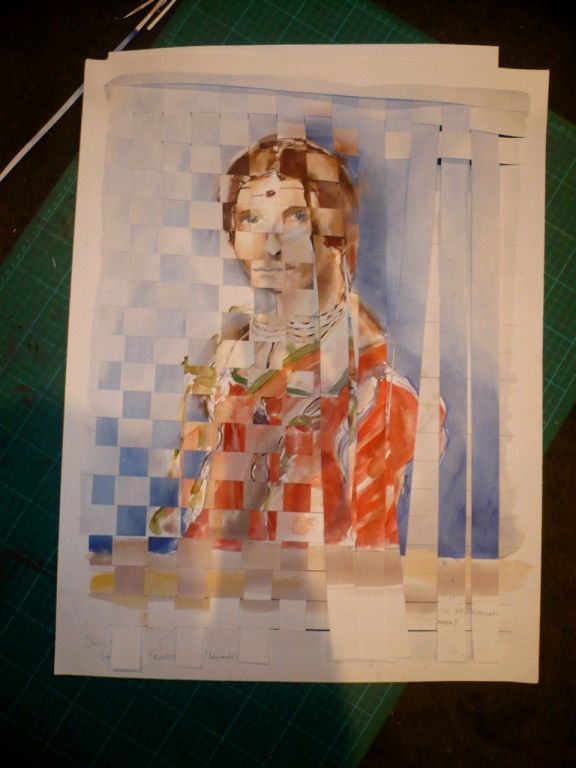I read a few years ago of the sale of a purported Leonardo , alleged to be a version of the painting in the Louvre, held by an American which came into his family with his french war bride as a wedding present. It had been controversially discredited by the great dealer Duveen through a photograph, and much later by scientific dating techniques but was still an old painting replicating Leonardo, not a modern fake http://www.italian-renaissance-art.com/La-Belle-Ferroniere.html. I was interested in how Duveen visually identified that it was not by Leonardo from a photograph. While this post starts with a bit of history it is still about how a work came about.
Assuming Duveen to know the Louvre’s painting I did a large watercolour study from a web image, and one from the study in the USA.
and then of the later version:
at this stage I thought that the opinion of Duveen was right from the subtle colour use and delicacy of modelling seen in the Louvre version but I still wanted a tighter comparison so took it a step further with a cutter blade…
and continued to work on it until the images meshed (as I could not leave it so conventionally), to arrive at the composite thus:


